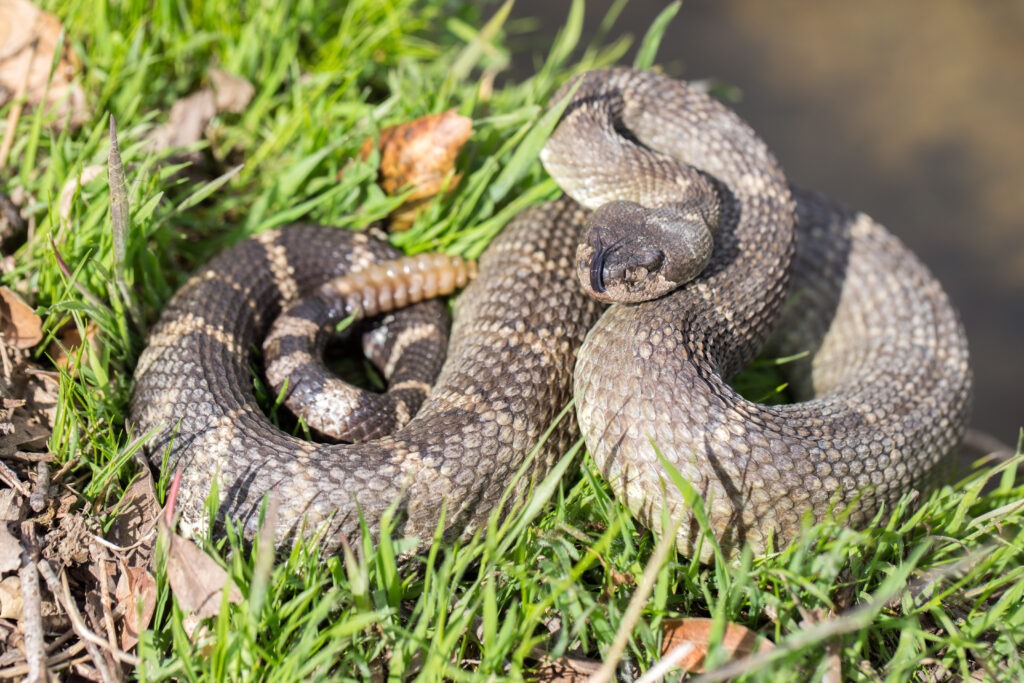
There’s nothing scarier than a rattlesnake, except for multiple rattlesnakes! While rattlesnakes are usually solo travelers, babies do stick together at birth. But how many babies do rattlesnakes have?
Here’s what I’ve seen:
As a general rule, rattlesnakes give birth to an average of 10 babies at a time. However, the rattlesnake life cycle and litter size depend on the specific species. They have a pregnancy period that lasts for about three months and rattlesnakes are only able to give birth once every two years.
What is the rattlesnake birth cycle like?
Are baby rattlesnakes dangerous? What is the difference in species? Here is everything you need to know about rattlesnake babies.
Rattlesnake Birth Cycle:
Like other cold-blooded animals, most rattlesnakes are ovoviviparous, which means that their young are produced from eggs that hatch within the body of the parent.
Once the eggs have been hatched, then the baby snakes are ready to exit their parents’ bodies and enter the world. These babies are born fully developed, which means they are not reliant on their parents for survival.
Baby rattlesnakes don’t stay with their parents for very long. Certain breeds will stay with their mother only for a few hours, while others will stay with their mother until their first shed, which happens when they are about a week old.
Mothers are physically able to give birth once every two years. Some snakes will only give birth every 3-4 years and some give birth consistently every other year.
Baby rattlesnakes grow to reproductive maturity (on average) at the age of 2 years old, where they search for a mate and restart the cycle.
Are Baby Rattlesnakes Really More Dangerous Than Adults?
Baby rattlesnakes are actually far less dangerous than adult rattlesnakes. But one reason that babies can be considered more dangerous is due to the fact that they don’t have a fully developed rattle yet, and therefore cannot give the warning sign to someone to let them know that they are nearby.
The idea that baby rattlesnakes are more dangerous is a myth that has long been discussed and argued over by people from many different professions and backgrounds.
So are baby rattlesnakes more dangerous?
The severity of a bite depends on many factors, including how fast treatment is received, how well it is given by the medical team, your medical history, the circumstances surrounding the bite, and other things related to your unique biology and the snakes’.
(source)
What you should do if you are bitten by a baby rattlesnake:
The first thing you should always do is call 9-1-1. Snakebites need to be treated within 30 minutes, if possible. This is because, after that time, the major symptoms will gradually develop and worsen, making it harder to treat the injury and survive.
If you can, try to identify and remember what the snake looked like, because this will help the medical team understand which type of snake bit you and allow them to give you the appropriate antivenin (another term for antivenom).
Each type of antivenom contains antibodies for specific poisons, like the ones found in the venoms of scorpions, spiders, and snakes.
Stay as still as possible and don’t raise the area of the bite above your heart, as this will actually cause the venom to reach it faster.
Remain calm, place a bandage over the wound, and wait for help to arrive. It is not a good idea to suck the venom from the wound, because this will cause the venom to be in your mouth and it puts the bacteria from your mouth into the wound.
(source)
The following are common symptoms you may experience with a rattlesnake bite:
- Puncture marks
- Numbness
- Weakness
- Nausea
- Blurred vision
- Sweating
- Difficulty breathing
- Dizziness/feeling lightheaded
- A tingling/burning sensation around the area of the bite. There might be some swelling or discoloration there too.
There are rarely any long-term side effects from a rattlesnake bite, as long as it is treated well and within a good amount of time.
General Information About Rattlesnake Babies
Baby rattlesnakes are often called “neonates” and are born with their fangs and venom. Snakes shed their fangs as well as their skin.
They shed their fangs about every 6 to 8 weeks and this helps keep them sharp and rigid for best quality while they’re attacking their prey. They have additional fangs that develop for preparation to replace the old fangs each cycle.
Baby and juvenile snakes will shed a lot more than adults since they have more growing up to do. After the rattlesnake is a few years old, they will shed 3 times a year at most. Baby rattlesnakes are typically born at about 10 inches long.
Baby rattlesnakes are born without their famous rattles, but they grow over time as they shed their skin.
They are born with something called a “pre-button” instead. When they shed their skin for the first time, they lose this piece, and a new “button” appears in its place. Then with every shedding after that, another button, or what we call “rattle,” is added.
These buttons are made up of a material called keratin, which is actually what our fingernails and hair are made up of! It’s also what makes up the scales of the snake.
The rattles are actually hollow, and the noise comes from each piece knocking against each other, which means that rattlesnakes can’t actually make any sound with their tails until they have grown two or more pieces of it.
While you can’t calculate the exact age of a rattlesnake based on their rattles, you can estimate by assuming the snake added 2 or 3 rattles for each year of their life.
Mother rattlesnakes hardly spend any time with their babies after they are born; sometimes they just slither off as soon as they are born. There are some that will stay with them for a week at most. The babies are fine with that since they are born as rather independent creatures.
Rattlesnakes vary from species to species when it comes to the gestation period, the number of babies, and the duration of parental care.
Western Diamondback Rattlesnake Babies FAQ
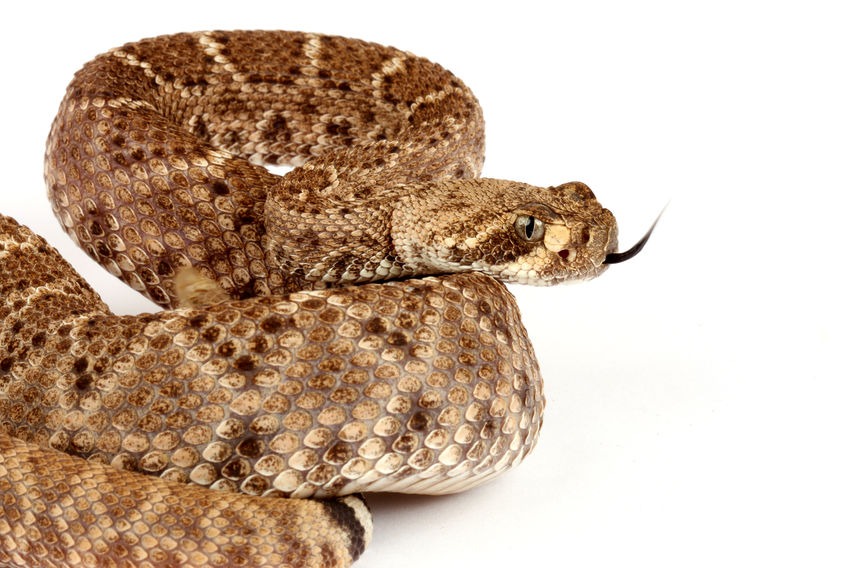
Details About Birth and Babies:
The gestation period for these rattlesnakes lasts for about 167 days or around 5 1/2 months. They can have up to 25 babies in a brood but an average brood of 14. Western Diamondbacks have bigger broods than most other rattlesnake species. These snakes typically give birth in the fall, and the mother leaves her babies within just a few hours of their birth.
Physical Appearance:
These rattlesnakes have a triangular-shaped head, 2 dark diagonal lines that run from their eyes to their jaw on either side of their face, a tail that has white and black bands just before the rattles begin, and a dark diamond-shaped pattern on their back. Source
Their color is generally a dusty color, but they can have other colors such as brick red, a slight yellow, and chalky white.
Eastern Diamondback Rattlesnake Babies FAQ
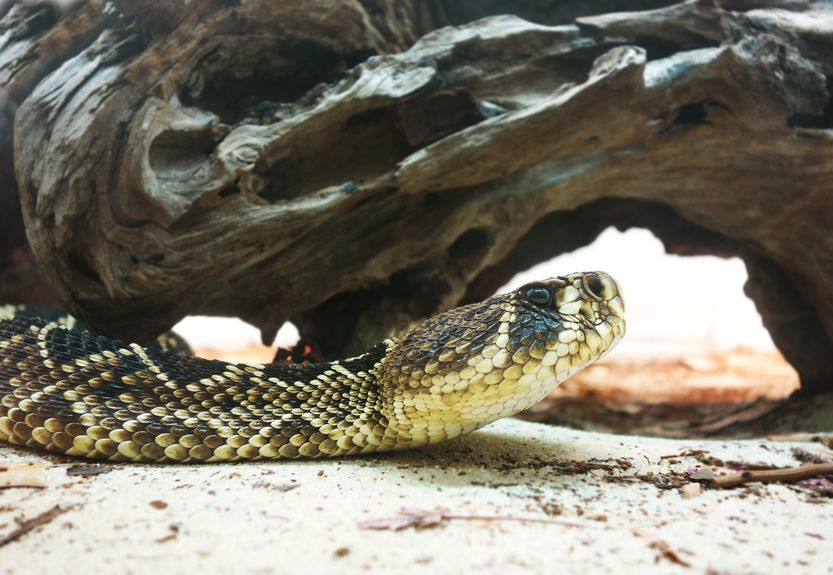
Details About Birth and Babies:
This specific type of rattlesnake has a very long pregnancy period, lasting around six to seven months. The mother snake can birth anywhere from 6 to 21 babies in a brood. The mother typically finds a retreat to give birth in, such as a hollow log or a premade burrow. Easter Diamondback babies stay with their mother until their first shed, which typically happens a week after birth.
Physical Appearance:
Eastern Diamondback Rattlesnakes have muted dull colors and are most easily recognizable by the diamond pattern on their back and the black band that covers their eyes. This type of rattlesnake is the largest rattlesnake species.
Sidewinder Rattlesnake Babies FAQ
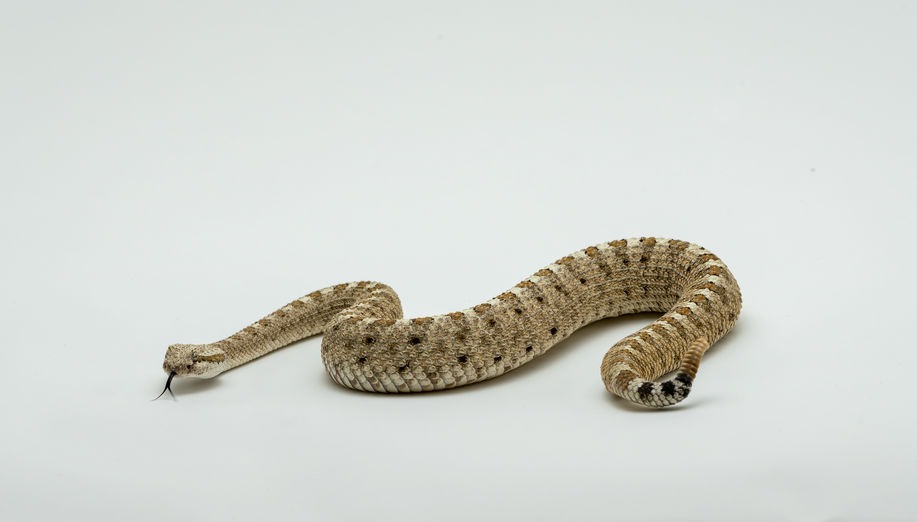
Details about Birth and Babies:
Sidewinders have a pregnancy period of 2 to 3 months. They give birth to a brood of 5-18 babies. The mothers burrow underground to give birth, and the babies stay in that burrow for a week, although they don’t receive any parental care.
Physical Appearance:
The Sidewinder is typically a cream or sandy color, with ridged, almond-shaped scales. A dark band can be found at the tip of the tail, right before the rattle. The underside of the snake is pale and the female sidewinders are usually larger than the males, averaging 19-31 inches in length.
The babies are 7 inches at birth.
Massasauga Rattlesnake Babies FAQ
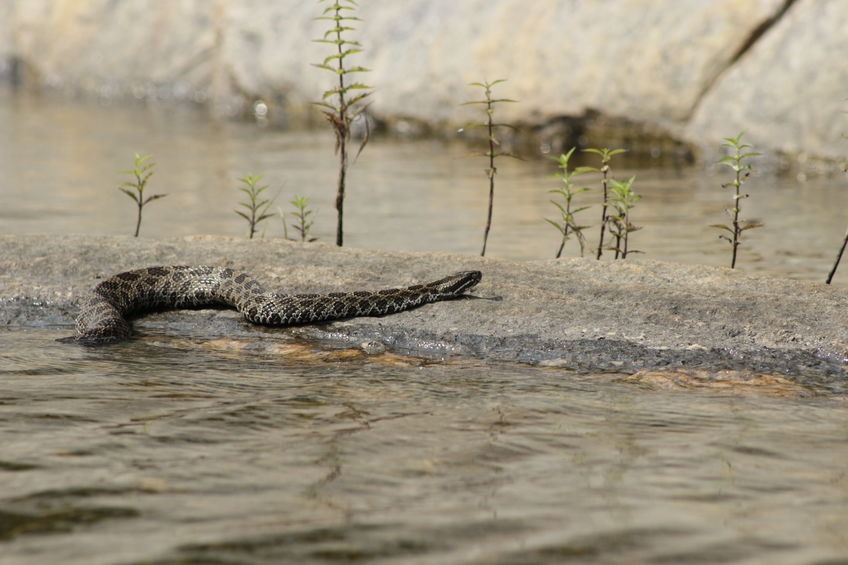
Details about Birth and Babies:
The gestation period for this snake is 2 to 4 months and they are typically born in mid-August. The mother usually finds logs or woodpiles to give birth in. The typical brood size ranges anywhere from 8 to 20 babies. These snakes stay in their birthplace until the first shed, which is an average of around 5 days after birth.
The mother does not provide any protection or care for her young.
Physical Appearance:
These snakes have a heart-shaped head, light brown coloration with big brown blotches on their back, and then small brown blotches on their side. The average length of the Massasauga Rattlesnake is around 2 feet for adults. The babies are around 9 inches long at birth.
Mojave Rattlesnake Babies FAQ
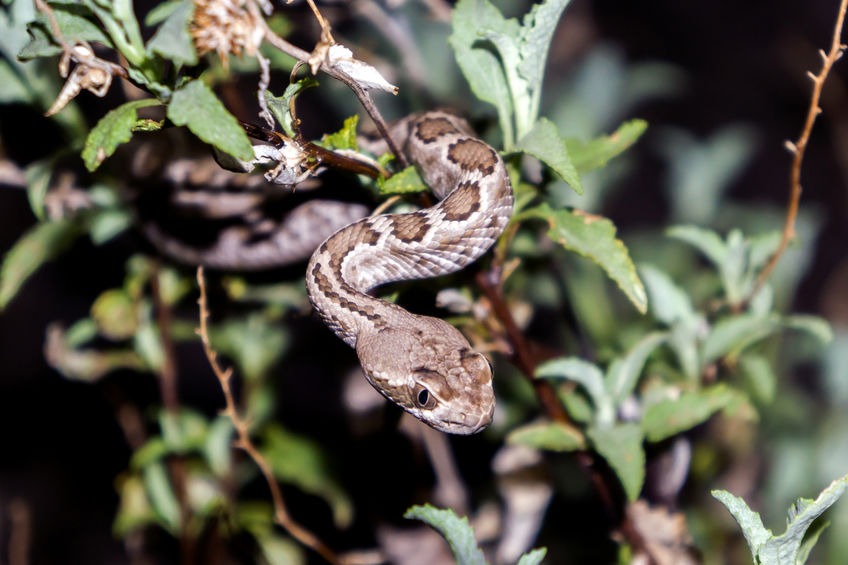
Details about Birth and Babies:
The Mojave rattlesnake gives birth to anywhere between 2-17 young, with an average brood size of 8. This particular type of snake will use abandoned burrows from rodents as birthing sites. The mother will abandon her children shortly after giving birth. The Mojave rattlesnakes give birth around mid-summer.
The babies are born at 10 inches in length.
Physical Appearance:
This rattlesnake varies from dark to olive green in color and has a dark diamond pattern on its dorsal side. Its tail displays bands of white and dark.
This snake ranges from 2-5 feet in length and has a triangular head with a thin neck. The babies are 10 inches long at birth.
Timber Rattlesnake Babies FAQ
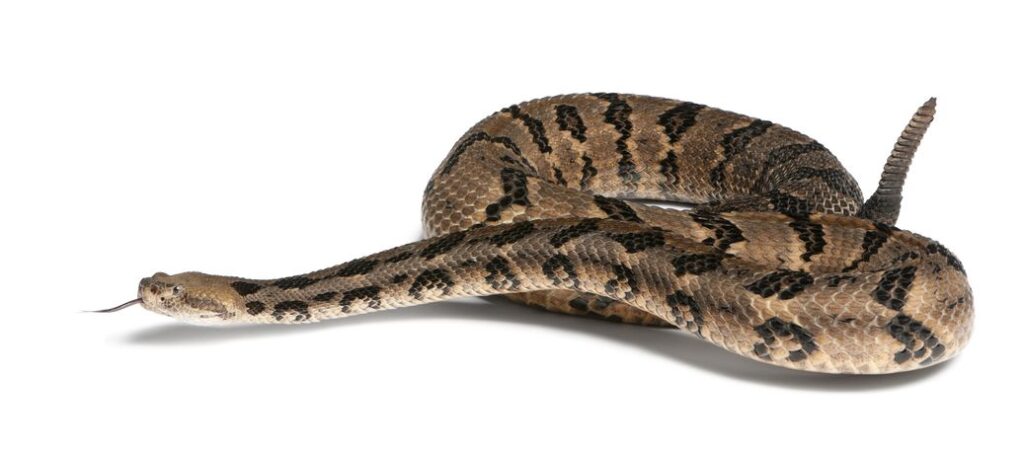
Details About Birth and Babies:
Females of this species can be pregnant for as long as 5 months, and will stay with their young for a week at most before leaving them on their own. The size of broods ranges anywhere between 3 and 13 babies, with 8 being the common average.
The season for giving birth is in the late summer or early fall.
Physical Appearance:
Also called the Canebrake or “banded” rattlesnake, Timber rattlesnakes typically have colors of brown, yellow, or black. They have solid black tails, and black chevrons on the back and sides with the point of the “V” pointing forward. Males get larger than females.
Babies look much the same but are usually a lighter gray and might have a stripe from their eyes to their jaws. Babies are born at 10-13 inches.
Pygmy Rattlesnake Babies FAQ

Details about Birth and Babies:
Pygmy Rattlesnakes have a pregnancy period that lasts from 3 to 5 months. They give birth to 2-12 young. These babies are born fully developed, so they don’t require any additional care.
However, they stay with their mom for 7-10 days after being born, which is a longer length than most rattlesnakes.
Physical Appearance:
The physical appearance of these rattlesnakes consists of oval spots on their flanks. Immature pygmy rattlesnakes have similar appearances, just less pigmentation. The Pygmy Rattlesnake is a short, thick-bodied snake, growing up to 19 inches in length.
Prairie Rattlesnake Babies FAQ
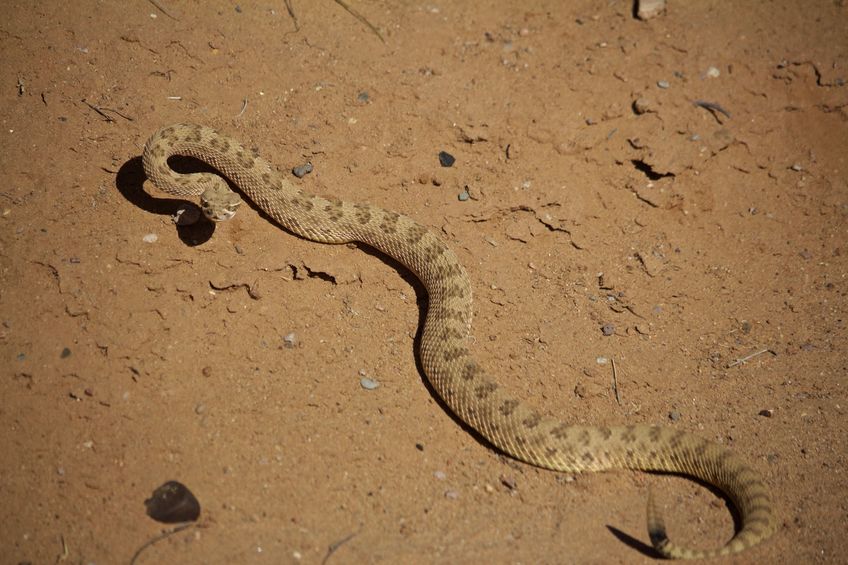
Details about Birth and Babies:
With the Prairie rattlesnake, the amount of babies born depends on the size of the female. These snakes can give birth to anywhere between 5 and 25 young. The gestation period for a prairie rattlesnake is around 3 months. The mothers generally take off soon after their babies are born.
Physical Appearance:
These snakes are light-colored, usually ranging in hues of brown colors. Dark brown patterns can be found on its back, and a dark color band is located near the eyes. These snakes grow around 35-45 inches in length. Quite the contrast to the babies being born at around 8-11 inches.
Of course, I have to point out that I am not a doctor and I do not provide medical advice. I have years of experience in being around rattlesnakes, handling rattlesnakes, and removing them. But I have not been bitten, although I know people who have. You should not take my article as medical advice and if you need medical advice, and especially if you or someone you know has been bitten by a snake, you should immediately call 911 and seek out qualified medical assistance as quickly as possible.
